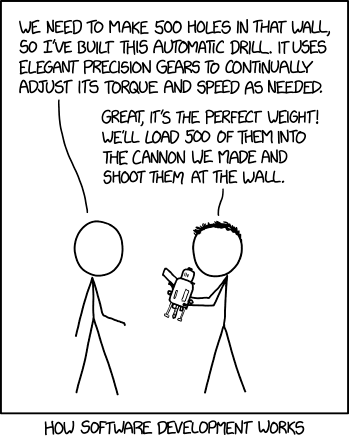Hetzner de servers auction https://www.hetzner.com/sb
Ransomware victims : https://www.ransomware.live/#/recent
Red and Blue teams in cybersecurity : https://anywhere.epam.com/en/blog/red-team-vs-blue-team
How google is using AI internally https://research.google/blog/ai-in-software-engineering-at-google-progress-and-the-path-ahead/
Protecting artists from gen ai : https://glaze.cs.uchicago.edu/what-is-glaze.html
configuring core dumps in linux/docker https://ddanilov.me/how-to-configure-core-dump-in-docker-container
dolt, a version controlled database mysql compatible https://github.com/dolthub/dolt
MS/DOS 4.01 is open source https://cloudblogs.microsoft.com/opensource/2024/04/25/open-sourcing-ms-dos-4-0/
Contents shortage for AI :
Meta, for instance, trained its new Llama 3 models with about 10 times more data and 100 times more compute than Llama 2. Amid a chip shortage, it used two 24,000 GPU clusters, with each chip running around the price of a luxury car. It employed so much data in its AI work, it considered buying the publishing house Simon & Schuster to find more.
https://www.bigtechnology.com/p/are-llms-about-to-hit-a-wall
Stop doing cloud if not necessary (I’m saying this since years..) https://grski.pl/self-host
Redis forks (after the licence change) :
– redict : https://redict.io/ Drew DeVault + others?
– valkey : https://valkey.io/ backed by AWS, Google, Oracle, Ericsson, and Snap, with the Linux Foundation; more to come imo.
nginx new fork https://freenginx.org/ (others forks are openresty)
Too much hype about Devin : Debunking Devin: “First AI Software Engineer” Upwork lie exposed! https://www.youtube.com/watch?v=tNmgmwEtoWE
Matt Mullenweg buys Beeper (already owns Texts.com and Element (New Vector)) consolidating his position in Matrix.org based messaging services : https://techcrunch.com/2024/04/09/wordpress-com-owner-automattic-acquires-multi-service-messaging-app-beeper-for-125m/
golang fasthttp (replacement for standard net/http if you need “to handle thousands of small to medium requests per second and needs a consistent low millisecond response time”. “Currently fasthttp is successfully used by VertaMedia in a production serving up to 200K rps from more than 1.5M concurrent keep-alive connections per physical server.” https://github.com/valyala/fasthttp
Back to basics 🙂 Bloom filter https://en.wikipedia.org/wiki/Bloom_filter
1 billion row challenge : https://github.com/gunnarmorling/1brc
golang : alternative to cgo ? https://github.com/ebitengine/purego
Command line benchmark tool : https://github.com/sharkdp/hyperfine
New jpegli, jpeg-xl derived : https://giannirosato.com/blog/post/jpegli/
Edge CDN techniques : Shielding from fastly i.e. use a designated edge cache instead of origin https://docs.fastly.com/en/guides/shielding on a edge cache miss.
Apple car not interesting anymore : https://www.bloomberg.com/news/articles/2024-02-27/apple-cancels-work-on-electric-car-shifts-team-to-generative-ai
golang error handling the Uber way : https://github.com/uber-go/guide/blob/master/style.md#errors
nginx forking : Maxim Dounin annouces https://freenginx.org/en/ on the nginx forum https://forum.nginx.org/read.php?2,299130
Quad 9 free dns 9.9.9.9 : https://www.quad9.net/
UI testing the netflix way : https://netflixtechblog.com/introducing-safetest-a-novel-approach-to-front-end-testing-37f9f88c152d
Check it out : the new super-ide https://zed.dev/
Lex/Yacc today : https://langium.org/
Inside Stripe Engineering Culture, a series a posts : https://newsletter.pragmaticengineer.com/p/stripe
I find truly interesting the point around promoting a write culture (Execs/Directors in tech blog, SWEs on tech blogs/internal technical documents) : https://newsletter.pragmaticengineer.com/i/140970283/writing-culture
I’m a long-time believer that writing clarifies thinking more than talking and writing persists information, makes it searchable, talking does not. “Verba volant, scripta manent” as the Latins use to say. But this idea shifted into “just enough” documentation (which means it is not necessary) in SW engineering latest methodologies so it is interesting that a multi billion company like stripe is going totally against the tide.




